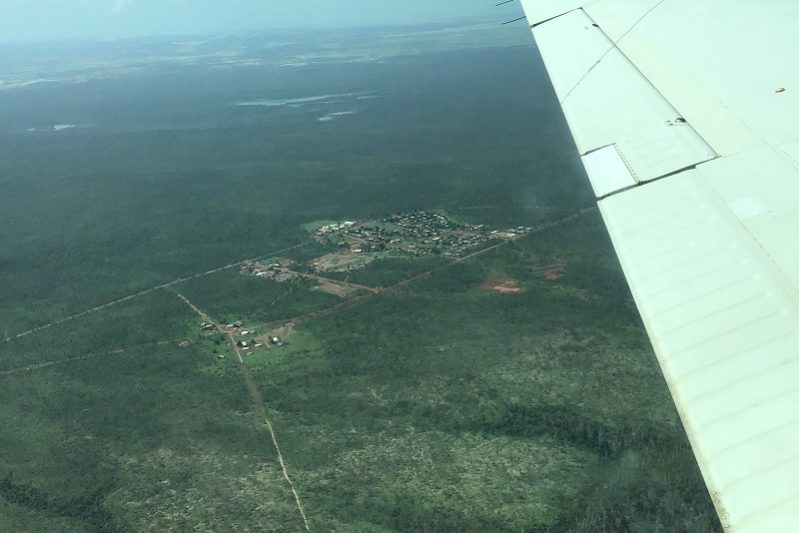In this NurseClick article Christopher Veal MACN reflects on his experience working as a Community Mental Health Nurse in a remote Aboriginal community in the Northern Territory.
My role as a Community Mental Health Nurse often takes me into the remotest areas of Australia,this week I was to visit an Aboriginal community in East Arnhem Land. I was accompanied by an Aboriginal mental health worker and we were there to ensure that the mental health care for people living in the community was of the necessary standard for all Australians.
One of the purposes of any visit we undertake to a remote Aboriginal Community is to assess any new referrals to the service, which mainly come from the permanent General Practitioner (GP) who works in the community and the local police. Another common responsibility is to work closely with the families of our clients to help them cope with their children, auntie or uncle living with mental illness. In the Aboriginal culture, it’s the aunties, uncles and grandmothers who are part of the care plan for an individual who is sick or needs care. So, it’s very important to involve the grandmother more than the mother when discussing the care of a person.
It’s important to highlight at this point that a good deal of this work is based on the help Aboriginal Health Workers provide us. Due to the cultural belief system (and especially because I’m a white middle-aged man), I can’t just stroll into people’s houses and start a conversation with someone. One needs to be introduced in the proper manner. I am a visitor into this community and I need a local person to help me break down the cultural barriers and assist in the locating and introducing me to Aboriginal clients.
Many people make up a remote workforce, but that doesn’t determine how much face to face work can actually be accomplished. Broken down cars, people on sick leave, deaths in the community, not enough drivers, too many specialists visiting the community and lack of accommodation need to be taken into consideration – characteristics of the job that that aren’t considered in a big city.
It’s also worth mentioning that it’s not just the mental health of community members that matters – remote staff members also need a helping hand. Some of them can be in the community for two months straight and be on-call three times a week. It can be very tiring and emotionally draining, and it’s a lonely place to work sometimes. An informal chat that helps the community health worker feel wanted and essential can go a long way in the running and wellbeing of the clinic.
Another challenge of working remotely in any Aboriginal Community is coping with the level of autonomy that you are provided with. It takes a lot of experience to be given the opportunity to work as a solo Practitioner in places far removed from other towns. When I first started working remotely, I worked as a Primary Care Nurse in Aboriginal Communities in the early 1990s. During that time, there was a solo phone line to a tertiary health centre if you needed advice, assistance or to organise a person to be flown out of that community to receive more care. Even today, many of these places are just as remote, but thanks to advancements in technology, however, delivery of care has improved significantly.
One such advancement is the implementation of cable internet, a reliable method of communication that has greatly changed the way we deliver care. The use of video-conferencing has been especially useful for mental health consultations. I can be in Nhulunbuy or Ramingining or Groote Eylandt and can conduct an assessment with the client and the psychiatrist in the tertiary referral centre – Darwin for us. I think most remote/rural health centres have this form of communication now. Not only does it benefit both parties, but also reduces the cost of care.
Before you know it, four days have gone by and it is our last day in the community. This is one of the incongruous parts of working remotely in a large expanse of land and servicing that land via a community fly-in-fly-out model. I can work there for four days and fly back to my home base and then after a month of flying I can’t even remember where I have been.
As a health care worker who often works in remote Australian communities, it’s easy to fall into the trap of doubting oneself. I often ask myself, ‘Do I really make any difference to anybody I have just talked to over the last four days?’ It’s a hard question to answer. At least with a broken leg, you know you have fixed something.
I don’t know the answer, but I do know when I go back to any community and meet the people I have spoken to previously, they are always welcoming and happy to talk. The ‘essence’ of mental health nursing lies not in the tasks that mental health nurses undertake in their care of people with mental disorders but in the relationship that a skilled clinician develops with the patient and his or her family. I suppose that’s one thing – and it definitely counts.





